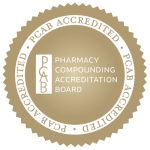Introduce novel ingredients in your dermatology practice through compounding
A successful and caring pain management practitioner is always in search of innovative personalized solutions for his or her patients that ease the administration requirements while at the same time providing improved clinical outcomes. Collaborating closely with an experienced compounding pharmacist is a critical part of this process. To highlight the beneficial relationships this creates, case studies have been used to outline some of the treatment options with compounded medications available to practitioners for their patients. Case studies also help practitioners collaborate with the compounding pharmacists to create guidelines and algorithms for preparing compounded medications for several types of pain.
Let us analyze a case here:
A female patient – T. R. – 64 years old, comes to the pain management office with pain in her lower back radiating towards her left leg. Despite taking oral NSAIDS (inconsistently), the pain became worse about two months ago and the radiation of pain began about 4 days before the visit. She also has a tingling sensation in her feet for the last 5 months. She is taking propranolol 10mg/day, Glucophage 1000mg twice daily, Ibuprofen 400mg three times/day prn and Cimetidine 200mg three times/day.
On a scale of 1 to 10, the severity of her pain is 9, affecting her mobility. She is prescribed the following compounded transdermal pain cream medication:
Ketoprofen 10% Gabapentin 6% Cyclobenzaprine 2% Lidocaine 5% DMSO 5% in a penetrating liposomal base
She is instructed to apply 1-2g to the painful areas and on the feet three times/day
She is advised by her physician to stop taking the oral ibuprofen and cimetidine.
After five days she calls the office and reports that her back pain decreased to a level 4 severity on the scale of 1 to 10, however there is no change in the tingling.
After three weeks she comes back to the office. The back pain is reported to be between 1 to 2 on a scale of 1 to 10. Her feet are much improved. She only has minor tingling at the tip of her big toes.
After three months, she reports that she is using the cream for her back only once daily, and on her feet twice daily. No back pains. No tingling. She wants to continue taking the cream for her feet to keep them from experiencing the tingling.
Case discussion – Patient is diabetic, hypertensive, no known allergies. She seems to be taking ibuprofen for a long time, on and off, as the back pain is chronic with acute exacerbations. Radiation of the pain has occurred for the first time. She is taking cimetidine because of ibuprofen’s potential GI side effects.
The compounded medication was prescribed to target her back pain, muscle spasms associated with it, and the mild diabetic neuropathy on her feet. All these were accomplished with one customized medication. She responded well for all targeted areas. Her compliance was much better than with oral ibuprofen. She had no reported side effects from the compounded medication. This was an innovative, convenient, cost-effective and an individualized solution for the patient that met the main goal – compliance and the ultimate goal of improved clinical outcome.
To see more case studies or collaborate on new case studies with your own patients, please contact the reliable compounding pharmacists at HALDEY Pharmaceutical Compounding.
References:
- Transdermal drug delivery in pain management Sanjay Bajaj, MD DNB FRCAAbigail Whiteman, MA MB BChir FRCABrigitta Brandner, MD FRCA FFFPMRCA Continuing Education in Anaesthesia Critical Care & Pain, Volume 11, Issue 2, 1 April 2011, Pages 39–43, https://doi.org/10.1093/bjaceaccp/mkq054
- Scheindlin S Transdermal drug delivery: past, present, future. Mol Interven 2004 4 (pg. 308-12) https://doi.org/10.1124/mi.4.6.1
- Ghosh, Tapash K.; William R. Pfister; Su Il Yum (1997). Transdermal and Topical Drug Delivery Systems. Informa Health Care. ISBN1-57491-041-8
- Pain Management Therapy: The Benefits of Compounded Transdermal Pain Medication Andrea Branvold*and Maria Carvalho
- Jorge LL, Feres CC, Teles VEP (2011)Topical preparations for pain relief: efficacy and patient adherence. J Pain Res 4: 11-24.




